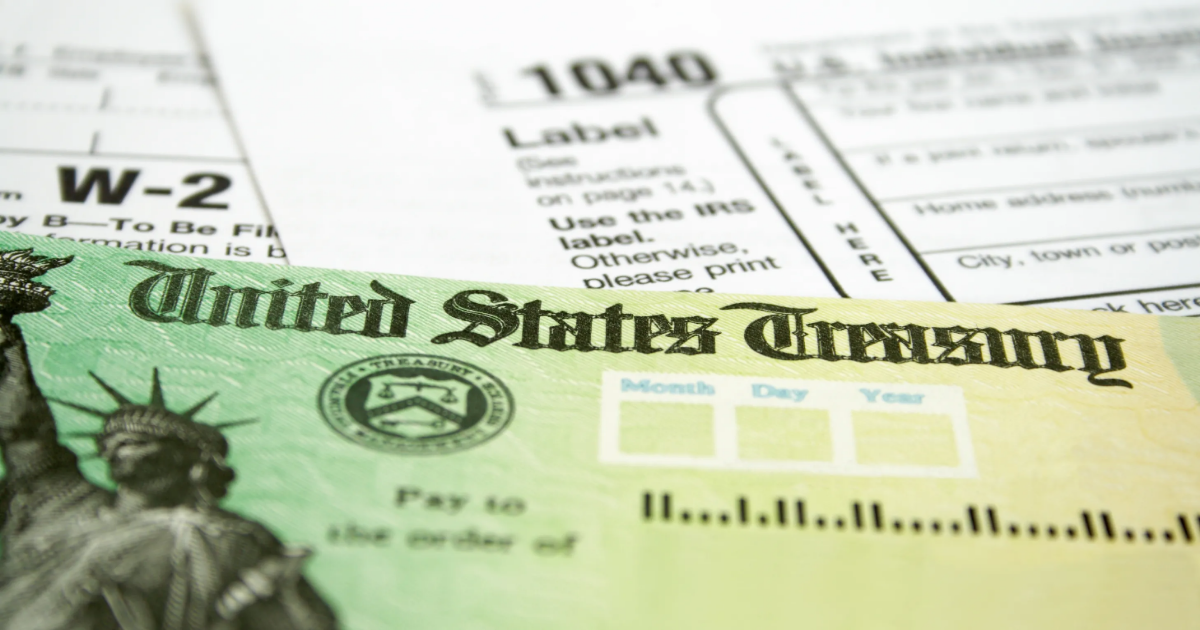
- Around 1 million Americans may be eligible for unclaimed $1,400 stimulus checks from 2021.
- The deadline to claim the stimulus payment by filing a 2021 tax return is April 15, 2025, coinciding with Tax Day for 2024 returns.
- Those who already filed their 2021 taxes may receive the payment automatically, while others need to file a 2021 return to claim it.
The deadline for more than 1 million Americans who may be eligible for $1,400 stimulus checks from the federal government is approaching, but they still have time ahead of the April 15th tax deadline to obtain the money.
The Internal Revenue Service started sending out approximately $2.4 billion to 1 million taxpayers back in December for Recovery Rebate Credit checks that hadn’t been claimed. However the IRS estimates another 1 million taxpayers are still missing out on $1 billion in stimulus because they never filed their 2021 income taxes.
The IRS said an internal examination of tax documents showed many people filed returns for 2021, but failed to claim the credit.
“Looking at our internal data, we realized that 1 million taxpayers overlooked claiming this complex credit when they were actually eligible. To minimize headaches and get this money to eligible taxpayers, we’re making these payments automatic, meaning these people will not be required to go through the extensive process of filing an amended return to receive it,” IRS Commissioner Danny Werfel said in a release.
April 15 is Tax Day for 2024 returns, but it also marks a three-year deadline to claim any tax refunds or, in this case, the $1,400 Recovery Rebate Credit for 2021.
Here’s what to know about the stimulus and if your qualify for it.
Who is eligible for the stimulus check?
Taxpayers in the U.S. who didn’t file or claim the Recovery Rebate Credit on their 2021 tax return qualify to obtain the money.
The refundable credit was for taxpayers who didn’t get one or more Economic Impact Payments (or stimulus checks) during the COVID-19 pandemic.
The stimulus amount is dependent on your adjusted gross income. In order to qualify for the full $1,400, a taxpayer’s annual income must not have been more than $75,000 for single filers or $150,000 for married couples filing jointly.
How do I claim the $1,400 stimulus check?
Most taxpayers eligible for EIPs have already received their EIP or Recovery Rebate Credit, the IRS said.
If you filed your previous tax returns, then you don’t have to do anything but wait for the IRS to mail a check or use direct deposit into the last bank account provided with your 2023 tax return. If that account has been closed, the IRS will send the check to your current address.
However, if you did not file a 2021 tax return to date, then you have until April 15, 2025, to file back-year returns. The IRS has a three-year deadline to claim a refund on tax returns.
When is tax day in 2025?
The deadline to file both state and federal taxes is April 15, which falls on a Tuesday.
Can I file an extension for my taxes?
Yes, if you won’t have your 2024 taxes complete by the April deadline, taxpayers should file for an extension to avoid penalties. The extension gives you until Oct. 15, 2025, to file.
Where’s my tax refund? How to track your return online
E-filing your federal tax return means your refund should arrive 24 hours after you e-file a current-year return; three to four days after you e-file a prior-year return; or four weeks after you file a paper return.
The IRS website includes a page to check the status of your income tax refund.
Where’s my Michigan tax refund?
The Michigan Treasury asks taxpayers to allow the appropriate time to pass before checking your refund status:
- E-filed Returns: Allow 3-4 weeks from the date you received confirmation that your e-filed state return was accepted before checking for information.
- Paper filed Returns: Allow 6-8 weeks before checking for information.
You can check your Michigan income tax refund status on the Michigan Treasury website.
I owe money, but can’t pay it right now. What should I do?
The IRS urges those who can’t pay their full balance to file and pay as much as they can on time. Filing on time avoids the late filing penalty, which is usually 5% per month on the unpaid balance.
In addition, by paying at least part of what they owe on time, taxpayers can reduce the amount of interest and late payment penalty that will be added to any payments made after April 15. Currently, the interest rate is 7% per year, compounded daily, and the penalty rate is usually 0.5% (one-half of one percent) per month.
The IRS offers both long- and short-term payment plans.
